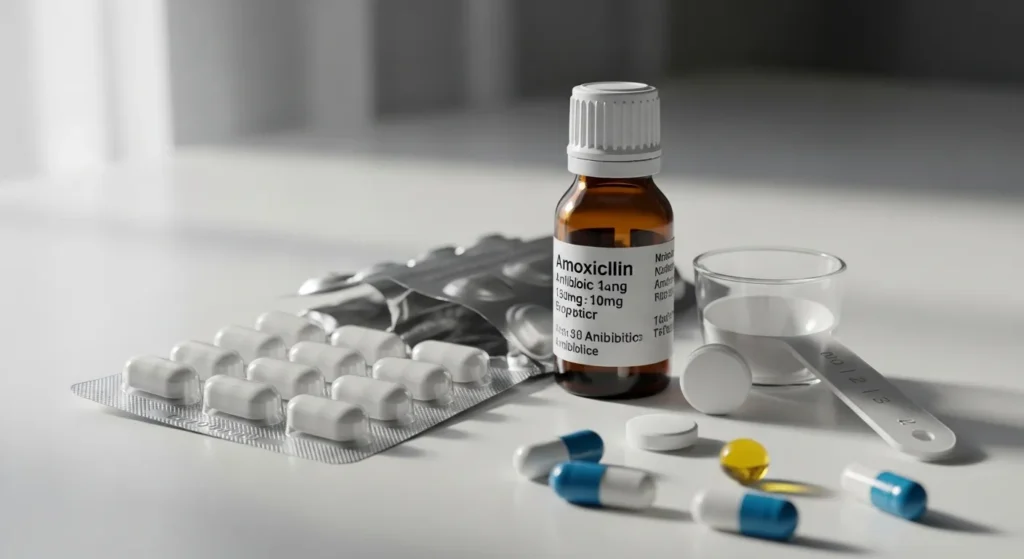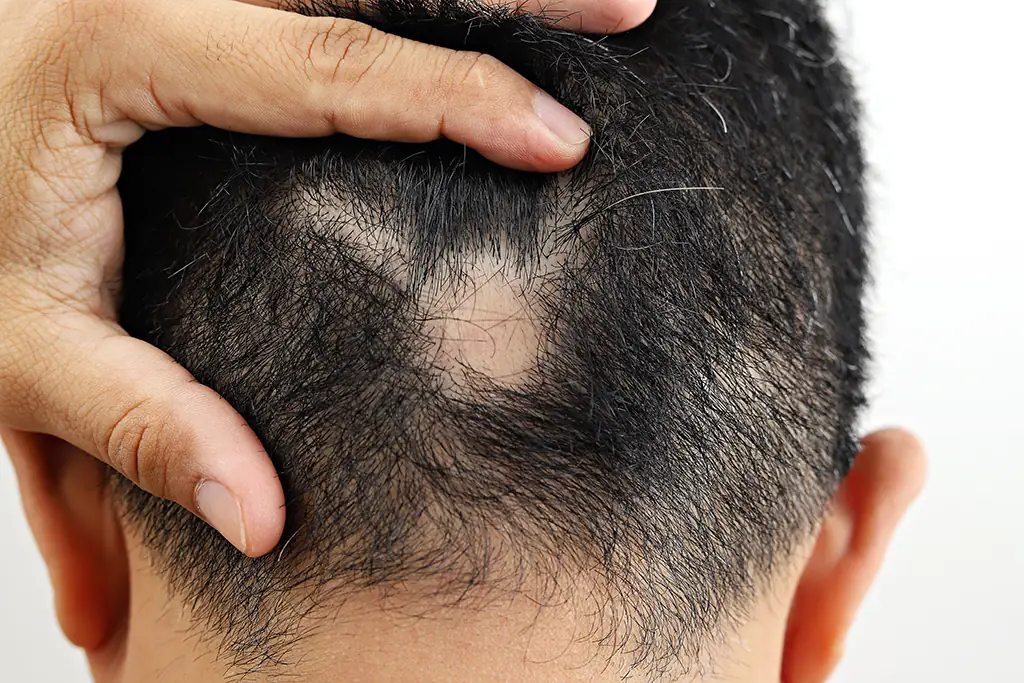Worried that your recent antibiotic treatment could be causing hair loss? Antibiotics hair loss is a concern for many, though in most cases, it’s indirect and temporary.
In this article, you’ll learn how antibiotics can affect hair health, which ones are most commonly linked to shedding, and how long it typically takes for hair to regrow.
We’ll also share expert-backed tips, recovery timelines, and when to seek professional help, so you can restore your confidence and protect your hair.
How Antibiotics Affect Hair Health

Antibiotics are life-saving drugs, but like many medications, they can have side effects. While hair loss is not a common or direct side effect, there are several indirect mechanisms that may trigger shedding.
Direct Evidence vs. Anecdotal Reports
Scientific studies directly linking antibiotics to hair loss are limited. Most evidence is anecdotal, reported by patients during or after antibiotic courses. Dermatologists often classify this type of hair loss as telogen effluvium, where hair follicles shift prematurely into the resting phase after a stressor, including illness, surgery, or certain medications.
[Medical Reviewer Note: Cite studies or dermatology journals discussing telogen effluvium and medications]
Nutrient Depletion Mechanism
Some antibiotics may interfere with nutrient absorption, particularly vitamins and minerals essential for hair growth:
- B-vitamins (especially B12 and Biotin) – needed for cell growth and keratin production
- Iron – vital for oxygen delivery to hair follicles
- Zinc supports tissue repair and immune function
Prolonged or repeated antibiotic use can upset the balance of these nutrients, potentially slowing hair regrowth.
Microbiome Disruption
Antibiotics not only target harmful bacteria but also disrupt beneficial gut and scalp microbiota. A healthy microbiome supports nutrient absorption and reduces inflammation, both critical for hair health. Imbalance in these bacterial communities could contribute to hair shedding in susceptible individuals.
Antibiotics Commonly Mentioned in Hair Loss Reports
While any antibiotic could theoretically contribute to hair shedding indirectly, some are more frequently mentioned in case reports and patient accounts:
- Penicillin and related drugs – occasional anecdotal reports of shedding
- Erythromycin – linked to rare telogen effluvium cases
- Cephalexin – sometimes associated with temporary hair thinning
- Rifampicin – rare cases connected to alopecia areata
- Azithromycin – isolated reports of increased shedding
Is Hair Loss from Antibiotics Reversible?
The good news—in most cases, it’s temporary.
- Hair shedding typically begins a few weeks after starting or completing antibiotics.
- Most people notice regrowth within 3–6 months as nutrient levels stabilize and the microbiome recovers.
- Persistent shedding beyond 6 months should be evaluated by a hair restoration specialist or dermatologist.
Managing or Mitigating Antibiotic-Associated Hair Loss
Nutritional Support
If you’re taking antibiotics, focus on replenishing nutrients to minimize shedding risk:
- Eat a balanced diet rich in protein, leafy greens, eggs, fish, and legumes
- Consider supplements like Biotin, Vitamin D, Omega-3s, Iron, and B12 (with medical guidance)
- Include probiotic-rich foods (yogurt, kefir, kimchi) to help restore gut health
Monitoring with Your Healthcare Provider
- Never stop antibiotics without medical advice—treating the underlying infection takes priority
- Track hair shedding patterns and overall health changes
- If hair loss persists, request blood tests for nutrient levels, thyroid function, and iron stores
Pro Tip: Keep a hair diary with dates, medications, and shedding observations—this helps your doctor assess potential triggers.
When Antibiotics Can Help Hair Health
Interestingly, antibiotics aren’t always the enemy of your hair—they’re sometimes used therapeutically:
- Scalp infections: Oral antibiotics can eliminate bacterial infections that cause hair follicle damage
- Post-hair transplant care: Short antibiotic courses help prevent infection and protect graft survival
- Scarring alopecia treatment: Research from NYU Langone found that low-dose doxycycline can help manage certain types of chronic hair loss by reducing inflammation, with fewer side effects than higher doses

FAQs
Can antibiotics directly cause hair loss?
Direct causation is rare. Most shedding is due to indirect effects like nutrient depletion or illness-related stress.
How long will antibiotic-related hair loss last?
Usually 3–6 months, depending on your health, nutrition, and hair cycle.
Should I stop taking antibiotics if I notice shedding?
No—complete your prescribed course. Discuss any concerns with your doctor.
Which antibiotics are most often mentioned?
Penicillin, erythromycin, cephalexin, rifampicin, and azithromycin.
How can I support hair regrowth during or after antibiotics?
Eat nutrient-rich foods, consider probiotics, and get a medical check-up if shedding persists.
Take Your Next Step
If you’ve noticed significant shedding after antibiotic treatment and it’s affecting your confidence, early assessment is key. Book a consultation with Dr. Rana Irfan in Islamabad to identify the cause, create a recovery plan, and explore proven hair restoration options.
